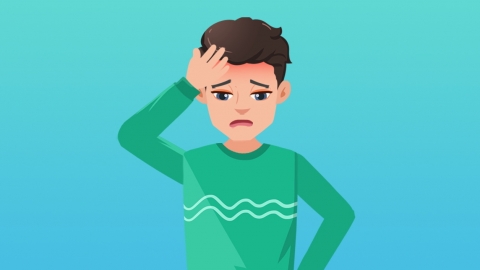What causes temple pain and how should it be managed?
Under normal circumstances, temple pain may be caused by factors such as mental tension and anxiety, insufficient sleep and fatigue, tension headaches, migraines, or high blood pressure. It is recommended to seek medical attention promptly, identify the underlying cause, and then improve symptoms under a doctor's guidance through general management, medication, and other approaches. Specific analyses are as follows:

1. Mental tension and anxiety: Prolonged stress and emotional anxiety can cause nerve tension and blood vessel constriction, leading to temple pain. Relaxation techniques such as deep breathing and meditation can help calm the mind and body. Avoid intense emotional fluctuations, and when necessary, relieve stress by talking with others or engaging in hobbies to divert attention.
2. Sleep deprivation and fatigue: Long-term staying up late and overexertion prevent the brain from getting adequate rest, causing muscle tension and triggering pain. Ensure 7–8 hours of sleep daily, avoid staying up late, take timely rest when tired, and reduce the duration of high-intensity work or exercise.
3. Tension headache: Caused by sustained contraction and tightness of head muscles, characterized by a dull ache on both sides of the temples. Patients may use medications such as ibuprofen sustained-release capsules, acetaminophen tablets, or naproxen tablets as directed by a physician. Combining these with head massage and warm compresses can help relax muscles and relieve pain.
4. Migraine: Triggered by abnormal blood vessel dilation and constriction, often presenting as a pulsating pain on one side of the temple, possibly accompanied by nausea. Patients may use medications such as zolmitriptan tablets, sumatriptan succinate tablets, or ibuprofen suspension as prescribed. Avoid strong light and noise stimulation, and minimize known triggers.
5. Hypertension: A sudden rise in blood pressure causes cerebral blood vessels to expand, pressing on surrounding tissues and causing pain. Patients should use antihypertensive medications such as nifedipine sustained-release tablets, irbesartan tablets, or amlodipine benazepril tablets as directed, regularly monitor blood pressure, and support treatment with a low-salt diet.
In daily life, maintain a regular routine, avoid prolonged低头 (looking down) at electronic devices, and engage in mild physical activities such as walking or yoga. Eat a light diet, reduce intake of spicy and high-salt foods, and decrease the frequency of temple pain episodes through consistent作息 (sleep-wake cycles) and healthy eating habits to promote brain health.








